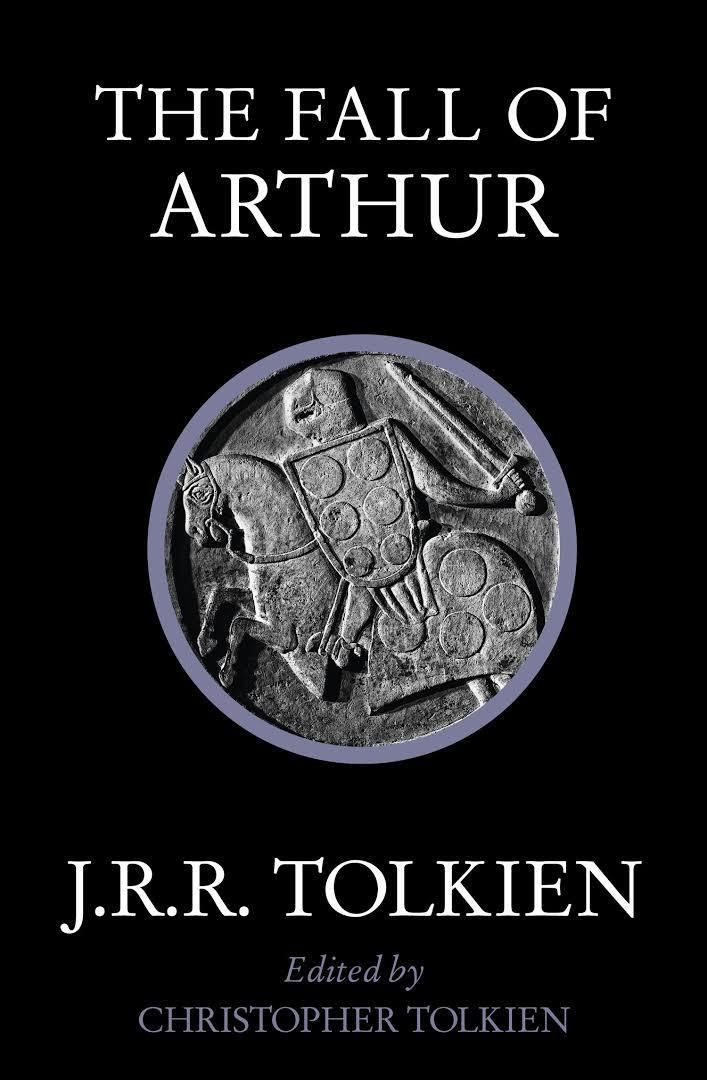7.6 /10 1 Votes7.6
Cover artist Bill Sanderson Language English Originally published 22 May 2013 Page count 240 | 3.8/5 Goodreads Illustrator Bill Sanderson Country United Kingdom Publication date 21 May 2013 | |||||||||||||||||||||||||||||||||
 | ||||||||||||||||||||||||||||||||||
Awards Goodreads Choice Awards Best Poetry Similar J R R Tolkien books, Other books | ||||||||||||||||||||||||||||||||||
The fall of arthur an easton press review
The Fall of Arthur is the title of an unfinished poem by J.R.R. Tolkien, concerned with the legend of King Arthur. A first posthumous edition of the poem was published by HarperCollins in May 2013.
Contents
The poem is alliterative, extending to close to 1,000 verses imitating the Old English Beowulf metre in Modern English. Though inspired by high medieval Arthurian fiction, the historical setting of the poem is early medieval, both in form (using Germanic verse) and in content, showing Arthur as a Migration period British military leader fighting the Saxon invasion, while it avoids the high medieval aspects Arthurian cycle (such as the Grail, and the courtly setting); the poem begins with a British "counter-invasion" to the Saxon lands (Arthur eastward in arms purposed).
Composition history
Tolkien, who was at the time Rawlinson and Bosworth Professor of Anglo-Saxon at Pembroke College, Oxford, wrote the poem during the earlier part of the 1930s. He abandoned it at some point after 1934, most likely in 1937 when he was occupied with preparing The Hobbit for publication. Its composition thus dates to shortly after The Lay of Aotrou and Itroun, a poem of 508 lines modelled on the Breton lay genre, written in 1930.
When the poem had been abandoned for nearly 20 years, in 1955 (after the publication of The Lord of the Rings was complete), Tolkien expressed his wish to return to his "long poem" and complete it in a letter to Houghton Mifflin, but in spite of this the poem remained unfinished.
Publication history
The existence of the poem was known publicly since the Tolkien biography by Humphrey Carpenter, published in 1977. Carpenter noted that the poem
"has alliteration but no rhyme. [...] In his own Arthurian poem [Tolkien] did not touch on the Grail but began an individual rendering of the Morte d'Arthur, in which the king and Gawain go to war in 'Saxon lands' but are summoned home by news of Mordred's treachery. The poem was never finished, but it was read and approved by E. V. Gordon, and by R. W. Chambers, Professor of English at London University, who considered it to be 'great stuff – really heroic, quite apart from its value as showing how the Beowulf metre can be used in modern English'."Carpenter also cited a passage from the text of the poem, to make the point that it is one of the very few instances in Tolkien's expansive work where sexual passion is given explicit literary treatment, in this case Mordred's "unsated passion" for Guinever,
His bed was barren / there black phantomsof desire unsated / and savage furyin his brain had brooded / till bleak morningAfter Tolkien's death, his Arthurian poem would come to be one of the longest-awaited unedited works of his. According to John D. Rateliff, Rayner Unwin had announced plans to edit the poem as early as 1985, but the edition was postponed in favour of "more pressing projects" (such as The History of Middle-earth edited 1983–1996), answering the demand for background on Tolkien's legendarium more than his literary production in other areas.
